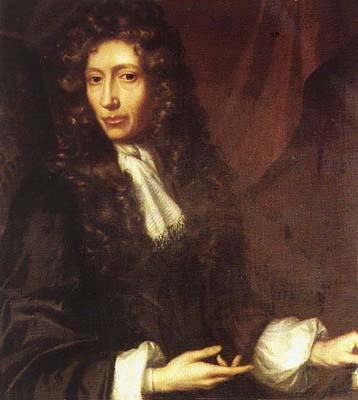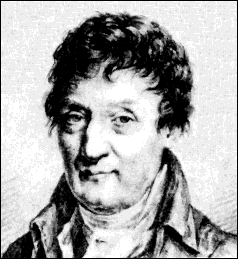Behavior of Gases
![]()
Pressure
 Blaise
Pascal
Blaise
Pascal
The pressure of a gas is measured in kilo Pascal's (kPa) because the Pascal is very small. The Pascal is the SI unit to measure the pressure of a gas. One would calculate a Pascal by taking a force and dividing it by the area that that gas is in. In other words, one Pascal is equal to force of one Newton exerted over the area of one square meter pa=F/A (pa=N/m3). At sea level the gas in the atmosphere exerts a pressure of 101.3kPa.
To learn More about Blaise Pascal and his contribution to fluid mechanics follow these links:
http://encarta.msn.com/find/Concise.asp?z=1&pg=2&ti=761570097
http://www.maths.tcd.ie/pub/HistMath/People/Pascal/RouseBall/RB_Pascal.html
Boyles Law
 Robert
Boyle 1627 - 1691
Robert
Boyle 1627 - 1691
Boyles Law states that if the volume of a container of gas is decreased the pressure of the gas inside will increase. That is, if the temperature remains constant. Therefore if the volume of a container of gas increases, then the pressure decreases. This property of gas is evident when one squeezes a balloon full of air. The pressure inside increases as the space of the balloon decreases.
To learn about Robert Boyle and his contributions to science, use the following links.
http://www-groups.dcs.st-and.ac.uk/~history/Mathematicians/Boyle.html
http://chemistry.mtu.edu/PAGES/HISTORY/Boyle.html
Charles's Law
 Jacques Charles 1742 - 1823
Jacques Charles 1742 - 1823
Charles' Law states that as the temperature of a gas increases, the volume that the gas increases. This is explained by the fact that when matter absorbs thermal energy, the atoms exhibit more kinetic energy and will move around more. The inverse is then true as well. As the temperature of a gas decreases, the volume of the gas decreases as well. To practice this, Fill a balloon with warm air. Measure the circumference of the balloon and record it. Place the balloon in the refrigerator or freezer for an hour. Take it out and then measure the circumference again. The balloon should be smaller because the gas has less thermal energy.
Charles calculated that there is a point at which a gas would have no volume. That point is -273oC, also 0 Kelvin. This is said to be absolute zero where all matter has 0 kinetic energy. Now gases cannot be cooled to the point of have NO volume, for all matter has volume, but it greatly reduced at 0 K than at 373 K (100 oC)
To learn more about Jacques Charles' contribution to science follow these links.
http://onsager.bd.psu.edu/~jircitano/charles.html